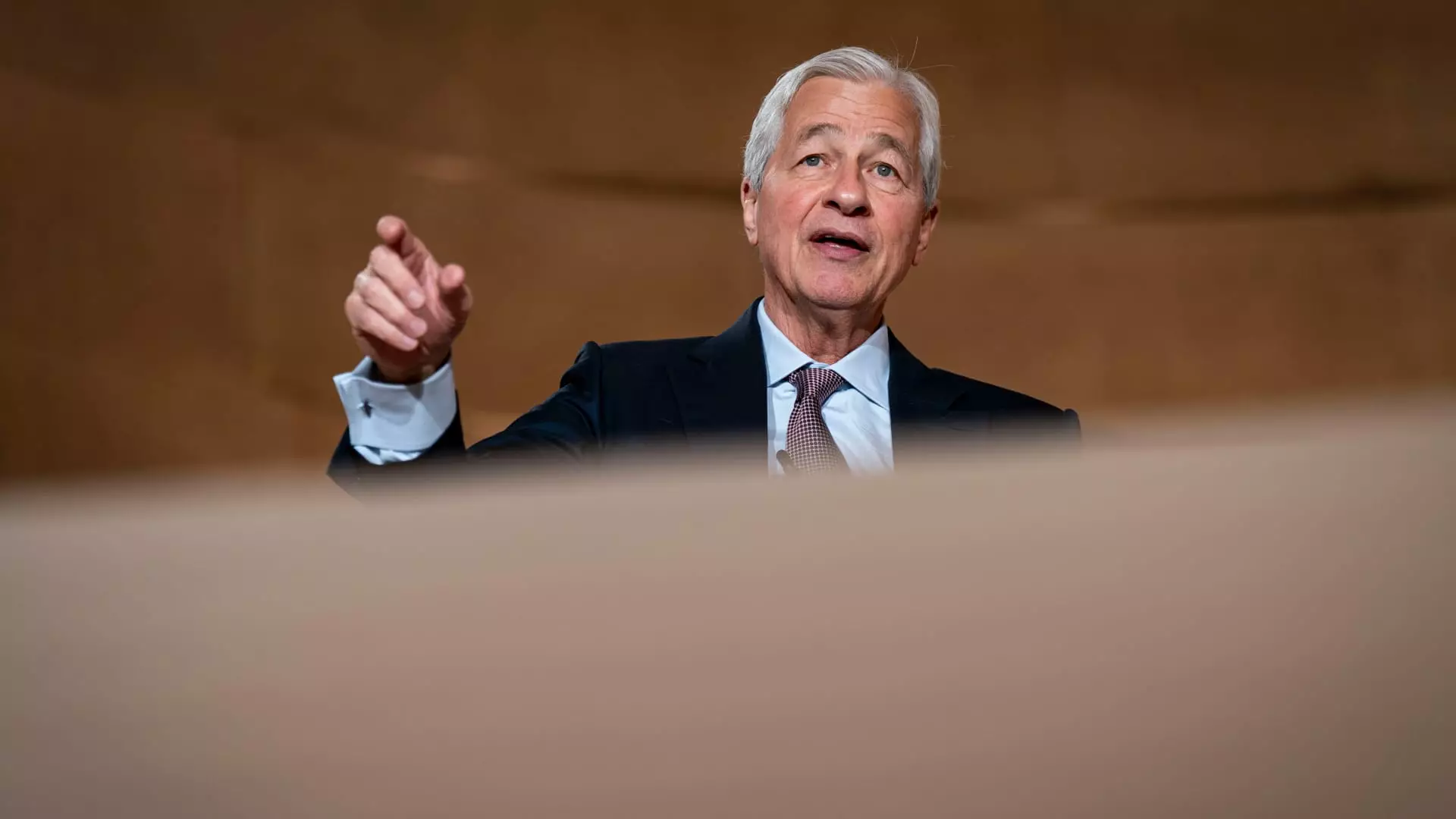There’s a dangerous disconnect between the optimism in financial markets and the stark economic realities that scream for attention. Jamie Dimon, the revered CEO of JPMorgan Chase, laid bare this chasm during the bank’s annual investor day meeting. His stark warning is hard to ignore; palpable issues such as skyrocketing U.S. deficits, tariffs that hang like a Sword of Damocles, and escalating international tensions threaten the very fabric of economic stability. The dissonance between Wall Street’s buoyant recovery and the sobering warnings from economic sages like Dimon underscores a critical lapse: an alarming underappreciation of systemic risk.
The narrative peddled by segments of Wall Street rests on the flawed presumption that current conditions will promote unbroken growth and stability. However, amid a veneer of fiscal health, dangers lurk. After all, can investors really feel secure when the U.S. credit rating has slipped yet another notch due to unmanageable debt levels? This escalating quandary demands a thoughtful examination rather than the knee-jerk optimism that characterizes much of today’s investment climate.
Echoes of Stagflation
Dimon’s forecast that we may soon grapple with stagflation—a poisonous cocktail of stagnating economic growth coupled with rising inflation—is not only alarming but warranted. Stock market values have seemingly detached from the fundamental economic indicators that should guide them. Defined by complacency, investors seem blissfully ignorant of the potential ramifications of ongoing trade wars and governmental mismanagement. Dimon paints a forbidding picture: profits are likely to decline, leading to a significant drop in stock valuations.
The grim forecast he provides serves as a wake-up call. The S&P 500’s earnings trajectory, projected to glide from a robust 12% growth to a tepid 0% in a mere matter of months, ought to rattle the investor community. Such radical shifts are rarely absorbed without consequences. Investors clinging to the notion that the bull market can withstand these pressures are displaying a misplaced faith. The ticking clock of economic indicators signals the urgency for a re-evaluation of financial strategies amidst these treacherous waters.
Corporate Hesitation and the Ripple Effect
Adding another layer of concern is the troubling “wait-and-see” attitude evident within corporate circles. Dimon’s top deputy, Troy Rohrbaugh, indicated a cautious approach among corporate clients regarding acquisitions and strategic investments. This paralysis could become a self-fulfilling prophecy, as stagnation in corporate growth compounds the anxiety embedded in market sentiments. Investment banking revenues are forecasted to decline at a staggering rate, amplifying fears of an economic slowdown.
Consider the broader ramifications: a lack of investment leads not only to stagnant growth but also hampers innovation and job creation. The hesitance stemming from economic uncertainty could spiral, creating an ever-tightening noose around the U.S. economy. As consumers become wary and businesses pull back, the once-vibrant engines of America’s economic success may sputter toward inertia.
The Central Bank’s Role in the Looming Crisis
At the heart of this increasingly concerning picture is the role of central banks. Dimon’s critique of their effectiveness raises important questions. With deficits ballooning and tariffs creating a minefield of uncertainty, can central banks truly mitigate these burgeoning risks? In a world where monetary policy seems strapped for options, it’s essential for policymakers to reassess their roles and responsibilities. Easy money and low interest rates may have worked in the past, but a reactive approach will not sufficiently address the complexities we face today.
A future where investors and entrepreneurs alike dismiss central banks as ineffective is a precarious one. If we remain mired in complacency, economic agents could find themselves grappling with a landscape where fiscal levers have lost their power to enact meaningful change. The trust in regulatory bodies must be re-instilled, but it can only come through decisive actions that prioritize long-term health over short-term fixes.
Leadership and Succession: A Reflection of Uncertainty
As Dimon nudges his way toward retirement, the search for his successor looms large. The current climate underscores the heightened expectations and responsibilities of the incoming leadership. In moments of profound uncertainty, organizations turn their eyes to their leaders, searching for a steady hand amid volatility. Yet, the question remains: will the governance of these financial titans yield the foresight required to navigate an increasingly intricate economic landscape?
In the quest for answers, one begins to question whether we need leaders merely groomed in financial engineering or visionaries capable of anticipating economic storms. The stakes couldn’t be higher; the legacies of these leaders will hinge not only on their governance during times of growth but how they guide—to safety or to disaster—during periods of impending doom.

